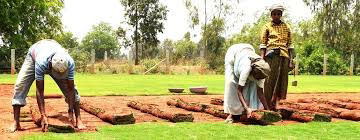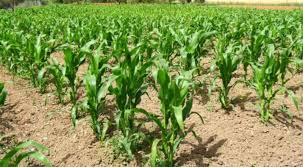Cultivating grass
Cultivating grass can be done for various purposes such as landscaping, sports fields, pasture, or erosion control. Here are the general steps involved in the cultivation of grass:
Site preparation: Assess the site where you want to cultivate grass. Clear the area of any existing vegetation, rocks, or debris. Grade the area to ensure proper drainage if needed.
Soil preparation: Test the soil to determine its pH level and nutrient content. Grass generally thrives in slightly acidic to neutral soil with adequate nutrients. If required, amend the soil by adding organic matter, such as compost, and adjust the pH level using lime or sulfur.
Selecting grass seed: Choose the type of grass that suits your specific needs and the growing conditions of your area. Grasses can be categorized as cool-season grasses (e.g., Kentucky bluegrass, fescue) or warm-season grasses (e.g., Bermuda grass, Zoysia grass). Select a grass variety that is appropriate for your climate and the intended use of the area.
Seeding: Prepare the seedbed by raking the soil to create a smooth surface. Follow the recommended seeding rate and spread the grass seed evenly across the area using a broadcast spreader or by hand. Lightly rake the seeds into the soil, ensuring good seed-to-soil contact.
Watering: Keep the seeded area consistently moist to aid in germination. Water lightly and frequently to prevent the soil from drying out. Avoid overwatering, which can lead to seed washout or disease.
Fertilizing: Once the grass seedlings have emerged, apply a starter fertilizer to provide essential nutrients for their early growth. Follow the recommended application rates and timing based on the type of grass and soil conditions. Avoid excessive fertilization, as it can cause environmental issues and weaken the grass.
Mowing and maintenance: As the grass grows, begin mowing when it reaches the recommended height for the particular grass species. Regular mowing helps promote healthy growth and discourages weed competition. Maintain proper watering and fertilization practices to support the grass's development.
Weed control: Monitor the grass for weed growth and take appropriate measures to control them. This can include hand-pulling weeds, spot treatments with herbicides, or cultural practices such as proper mowing and fertilization to encourage healthy grass growth that can outcompete weeds.
Ongoing care: Continue to care for the grass by providing adequate water, fertilization, and mowing based on the specific requirements of the grass species. Perform routine maintenance tasks like aerating the soil, dethatching, and overseeding as needed to keep the grass healthy and vibrant.
Remember, specific grass cultivation practices may vary depending on the type of grass, regional climate, and intended use of the grassed area. It's always helpful to consult local gardening experts, agricultural extension offices, or turfgrass professionals for tailored guidance based on your specific location and requirements.




Comments
Post a Comment